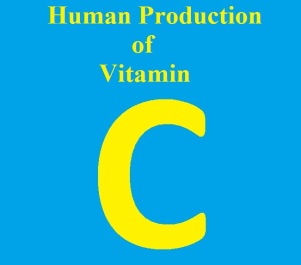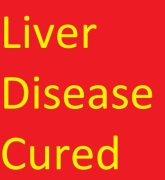 Vitamin D does treat liver disease. Way back in December 2009, I wrote about how vitamin D had brought myself and one other family member’s liver markers into the normal range. This included a problem with hepatitis—Hepatitis C Cured? By now I have had many tell me that taking vitamin D had cleared up their liver. The commercial that we are constantly bombarded with on TV about you don’t have to have Hep C anymore is a drug that is most likely just a vitamin D mimic or analogue (A manmade molecule or compound that is similar to the natural molecule.).
Vitamin D does treat liver disease. Way back in December 2009, I wrote about how vitamin D had brought myself and one other family member’s liver markers into the normal range. This included a problem with hepatitis—Hepatitis C Cured? By now I have had many tell me that taking vitamin D had cleared up their liver. The commercial that we are constantly bombarded with on TV about you don’t have to have Hep C anymore is a drug that is most likely just a vitamin D mimic or analogue (A manmade molecule or compound that is similar to the natural molecule.).
The Vitamin D Council, Dr. Cannell, has ranted on about how vitamin A is destructive to the level of vitamin D. Strictly speaking this is true. He even had a disagreement with the Weston Price Foundation about the need for vitamin A. Cannell’s contention was that vitamin A build-up in the liver was the cause of chronic liver disease. The truth, vitamin D and vitamin A form a dimer in some of the most important functions in the body. If you are getting enough vitamin D, your liver clears of vitamin A. The important functions that I can think of immediately are cellular differentiation and stimulating the immune system, specifically the start of increasing antimicrobial peptides that are your body’s natural pathogen killer cells. After several months of supplementing with vitamin D, I had to also supplement with vitamin A, retinol palmitate, for the effectiveness of vitamin D. Until trials are run with the combination of vitamin D and vitamin A, there will continue to be confusion over the effectiveness of fat-soluble vitamins. Our forebears were absolutely correct in their supplementation with cod liver oil.
It is the combination of vitamin D and vitamin A that is critical to your health. Our fathers of medicine have long ranted about the dangers of fat-soluble vitamins. The primary reason for this is not a lack of understanding, but the need to sell you pharmaceutical analogues. Eat large amounts of beta carotene as that is not dangerous was the mantra. The truth is that large amounts of beta carotene can be very dangerous to the lungs. The liver does not convert beta carotene until you are already deficient in vitamin A. The manufacturers of vitamins have reduced the amount of beta carotene that was in multivitamins.
Now with nutraceuticals that are available, we can have our cake and eat it too. Dr. P. R. Raghavan has created the nutraceutical Metadichol. This works to bring the body to homeostasis. It works along many pathways included genetic expression and control of the molecular receptors. What is Metadichol and why is it so effective in treating disease and healing wounds? Metadichol is made of policosanol that is commonly found on all plants. The problem in modern nutrition is that we take away the part of the plant where the concentration of the policosanol is the highest. The advantage of Metadichol is it is made by making a small particle emulsion. We did some of this on our own when we used to chew the husk from food. Now, we have the opportunity to assure that we are getting enough policosanol for health. Taking policosanol as a supplement is not the same as the small particle emulsion. Dr. Raghavan has published over ten papers on the matter and is going around the world to lecture and help other researchers understand the importance of the small particle emulsion of policosanol. Metadichol is very important in how it puts the vitamin D receptor into the state that is required for health. The vitamin D receptor is like the conductor of an orchestra in the smooth harmonies of all receptors. Here is a recently published article on how Metadichol is significant for liver disease.
“A Multi Gene Targeting Approach to Treating Liver Diseases with Metadichol®”
Abstract
Liver diseases are becoming a major health concern. In the developing countries it is due to microbial infection. In the rest of the developed world it is due to alcohol abuse. Chronic liver disease and cirrhosis are a significant health concern in western countries. It is the fifth most common cause of death, after heart disease, cancer, stroke, and chest disease. The liver is capable of regeneration, but it can be overwhelmed leading to liver diseases like cirrhosis and hepatocellular cancer (HCC).
Vitamin D levels are low in most patients with liver diseases, and this suggests possible therapeutic benefits with use of vitamin D or its analogues. Vitamin D, through the vitamin D nuclear receptor (VDR) plays a crucial role in mineral ion homeostasis. The liver has a central role in vitamin D synthesis and there is a need for an agent that will not lead to hypercalcemia. Metadichol, a nano-emulsion of long-chain alcohols derived from food, is an inverse agonist of Vitamin D can fill this void.
In Diabetic rat studies, it inhibits TNF alpha, ICAM1 (intracellular adhesion molecule), CCL2 (chemokine C-C motif) also referred to as monocyte chemoattractant protein 1 (MCP1). All these cytokines, chemokines are known to have important role in liver diseases. We show that Metadichol indeed does work in liver disease patients by normalizing essential liver enzymes ALT, AST and ALP, and GGT. This approach is an example where Metadichol targets multiple genes and via multiple pathways to bring about homeostasis of the liver and is a useful, safe, nontoxic product in treating liver diseases and alleviating a global threat.
Link to published paper: Liver-disease-paper (1)
Mark Pegram
Please note that I have not been writing due to the long-term illness and recent death of my brother from agent orange exposure during his thirty months at war in Vietnam. The mutation of his genes from the dioxin exposure prevented his physiology from reacting normally to modern medicine and nutrition. Interestingly, the doctors and researchers in my family have agreed to this. War and the aftermath is hell.
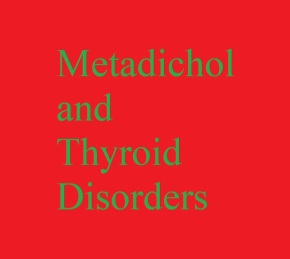 Metadichol has shown that it is effective in treating many maladies. It is not a drug with one target. It is a food substance that acts on many targets including genetic expression and controlling nuclear receptors. Metadichol is a nanoemulsion of long chain alcohols that are commonly found on most plants. We have lost access to this vital nutrient because of processing foods.
Metadichol has shown that it is effective in treating many maladies. It is not a drug with one target. It is a food substance that acts on many targets including genetic expression and controlling nuclear receptors. Metadichol is a nanoemulsion of long chain alcohols that are commonly found on most plants. We have lost access to this vital nutrient because of processing foods.
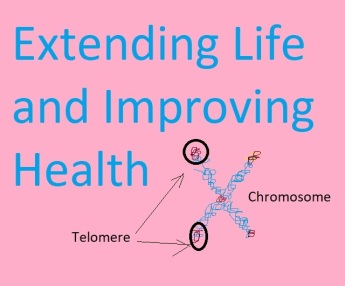 Metadichol® strikes again by improving the quality of life, eliminating disease, and
Metadichol® strikes again by improving the quality of life, eliminating disease, and 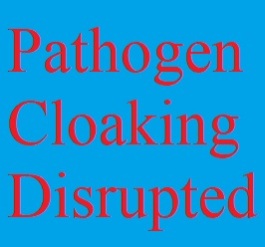 In the much-watched Star Trek program, the dastardly Klingons would cloak their ships so that they were invisible to the USS Enterprise. In the human body, pathogens also cloak themselves to be invisible, seem like sugar or a food, by using sialic acids. Sialic acids are common on the cells of vertebrates and are the highest concentration in the brain. The immune system will not attack pathogens with sialic acid attached because they appear as a natural part of the human system. Dr. P. R. Raghavan has found that Metadichol, by expressing the CD33 gene, allows binding of these acids so that the immune system can disrupt the pathogen.
In the much-watched Star Trek program, the dastardly Klingons would cloak their ships so that they were invisible to the USS Enterprise. In the human body, pathogens also cloak themselves to be invisible, seem like sugar or a food, by using sialic acids. Sialic acids are common on the cells of vertebrates and are the highest concentration in the brain. The immune system will not attack pathogens with sialic acid attached because they appear as a natural part of the human system. Dr. P. R. Raghavan has found that Metadichol, by expressing the CD33 gene, allows binding of these acids so that the immune system can disrupt the pathogen. Vitamin D does treat liver disease. Way back in December 2009, I wrote about how vitamin D had brought myself and one other family member’s liver markers into the normal range. This included a problem with hepatitis—
Vitamin D does treat liver disease. Way back in December 2009, I wrote about how vitamin D had brought myself and one other family member’s liver markers into the normal range. This included a problem with hepatitis— Clotho is one of the three Greek fates that are responsible for the thread of life in Greek mythology. Clotho is known as the spinner of the thread while the others draw out and cut. In our understanding of physiology, we have named the gene responsible for reduced chronic disease—Klotho. The up regulation of klotho appears to significantly reduce chronic disease. A few to consider are cancer, diabetes, rheumatoid arthritis, and coronary artery disease. Have we stumbled unto the gene that is responsible for the fountain of youth?
Clotho is one of the three Greek fates that are responsible for the thread of life in Greek mythology. Clotho is known as the spinner of the thread while the others draw out and cut. In our understanding of physiology, we have named the gene responsible for reduced chronic disease—Klotho. The up regulation of klotho appears to significantly reduce chronic disease. A few to consider are cancer, diabetes, rheumatoid arthritis, and coronary artery disease. Have we stumbled unto the gene that is responsible for the fountain of youth?


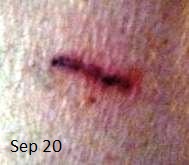
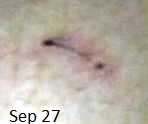 There was significant soreness that continued throughout the seven days. Here is a picture of the result. As you can see, the scab is still in place, and there is some healing. I started treating it with Metadichol, and it healed in several days.
There was significant soreness that continued throughout the seven days. Here is a picture of the result. As you can see, the scab is still in place, and there is some healing. I started treating it with Metadichol, and it healed in several days. 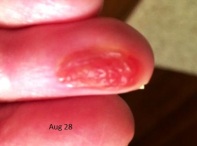 A friend of mine contacted me in August 2015 to say that she had a burn on her finger that was not healing.
A friend of mine contacted me in August 2015 to say that she had a burn on her finger that was not healing.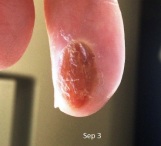 I am not sure how long it had been since she had the burn. She said she had been to a doctor, and he gave her a steroid ointment. I gave her a bottle of the Metadichol and suggested that she spray the wound with one spray twice per day. She said she no longer used the steroid ointment.
I am not sure how long it had been since she had the burn. She said she had been to a doctor, and he gave her a steroid ointment. I gave her a bottle of the Metadichol and suggested that she spray the wound with one spray twice per day. She said she no longer used the steroid ointment.  Here are pictures of the wound from day one, day six, and day ten. It is amazing how the wound progressed to healing from day six to day ten. She called me to ask if she should break the blister on day six. I told her that I did not think that was a good idea. The day ten photo speaks to the accuracy of this suggestion.
Here are pictures of the wound from day one, day six, and day ten. It is amazing how the wound progressed to healing from day six to day ten. She called me to ask if she should break the blister on day six. I told her that I did not think that was a good idea. The day ten photo speaks to the accuracy of this suggestion.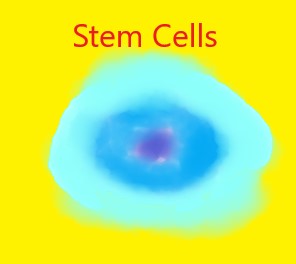 My first experience with Metadichol was the quick healing of a wound. A wild cherry tree had fallen in the woods behind my house. I had sawed the tree into fire size logs and stacked them in a pile. As I threw one of the logs onto the pile, it caught the back of my hand and caused a two-inch-long cut. I treated the cut with the Metadichol spray. The healing took place twice as fast as my normal experience with cuts. I suspected then that somehow stem cells must have been increased or differentiated or both by the Metadichol for the quick healing (A future article will show two examples of healing with Metadichol from my personal experience.) Dr. P. R. Raghavan has had research done by Skanda Labs to show that stem cells are increased in umbilical cord blood when treated with Metadichol.
My first experience with Metadichol was the quick healing of a wound. A wild cherry tree had fallen in the woods behind my house. I had sawed the tree into fire size logs and stacked them in a pile. As I threw one of the logs onto the pile, it caught the back of my hand and caused a two-inch-long cut. I treated the cut with the Metadichol spray. The healing took place twice as fast as my normal experience with cuts. I suspected then that somehow stem cells must have been increased or differentiated or both by the Metadichol for the quick healing (A future article will show two examples of healing with Metadichol from my personal experience.) Dr. P. R. Raghavan has had research done by Skanda Labs to show that stem cells are increased in umbilical cord blood when treated with Metadichol. 